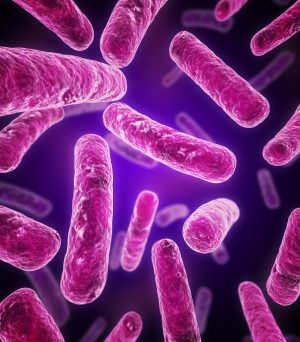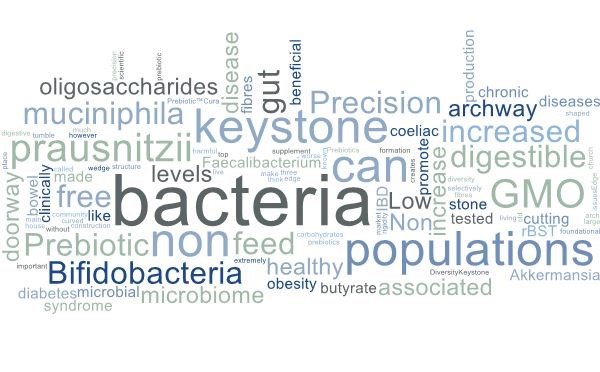
This blog looks at common probiotic misconceptions, teaching you how to make an informed decision when it comes to shopping for a high-quality probiotic to improve your health.
Myth #1: A Probiotic with 50 Billion Cells is Better than 3 Billion Cells
FALSE. In microbiological terms, more is NOT always better. Having 50 billion CFUs in a probiotic is only helpful if you can confirm that 50 billion CFUs are surviving in the digestive tract.
Unfortunately, survivability studies with some of the leading probiotics (as high as 250 billion CFUs) indicate that more than 99% of the strains cannot survive digestion.
While Lactobacillus or Bifidobacter do reside in our gut, commercially produced strains are shockingly poor stomach survivors and gut colonizers. This explains why so many people find common probiotics ineffective.
Look at your probiotic ingredient label. If the strains start with the word Bacillus, those are the hardy spore bacteria which have the ability to survive digestive acids and immediately begin healing your gut. Anything else indicates a fragile, non-spore strain.
Myth #2: You Need a Probiotic with at Least 15 Different Strains
Absolutely FALSE. Most probiotic studies are done with a single strain and there has never been a study that shows that more strains mean better results.
The quality of the strain is far more important than quantity. When a company creates a “kitchen sink” formulation with dozens of strains, they often use cheaper, lower quality strains to reduce their manufacturing costs.
Often, nutritional supplement companies have no idea if these probiotic cocktails will be synergistic or if the bacteria will, instead, compete with one another, possibly producing a negative result in your gut. You are better off using a product with 3-4 Bacillus spore strains where the synergy of the formula has been scientifically verified than take an untested product that may have anywhere from 10–20 strains of probiotics.
Labels with dozens of strains can fool you. Instead, look for products that can reference clinical studies showing efficacy of their strains and synergy in their formulations.
Myth #3: What You See on the Label is What You Get in the Capsule
Not necessarily. A study at the University of California found that only 1 in 16 probiotics had labels that matched their contents for strains and potency.
Think about that, 15 out of 16 bottles tested had different strains and/or potency than the information stated on the label. Do you really want to risk putting bacteria in your body that have not been tested for safety?
Always ask the nutritional supplement company for post-manufacture DNA verification proving that their ingredients and their potency match their label and have been characterised as safe. For example: Cura Sporebiotics ensure each batch have 3rd party DNA strain verification.
You can learn more about the unique benefits of Cura Sporebiotics here https://www.curanutrition.com/product/cura-sporebiotics/
Myth #4: A Probiotic Needs to be Refrigerated to be a “Good” Probiotic
Again this is FALSE. Refrigeration is actually a sign of a very weak probiotic. If a probiotic cannot survive at room temperature, how do you think it will survive in your 37°C body, much less through your extremely acidic digestive tract? Short answer: it won’t. Ask for gastric survivability test results proving the probiotic arrives alive in the intestines and a gut model study showing that it colonises in the gut.
Myth #5: You should take probiotics on an empty stomach
If you think back to how our ancestors got their probiotics, they ate them as part of their diet and through being exposed to different environmental conditions.
The whole idea of taking a probiotic in a fasting state or on an empty stomach is that you want to weaken the amount of stomach acid so it doesn’t destroy the probiotic. Stomach acid is produced when we eat and helps break down food as part of the digestion process, but stomach acid can also destroy some probiotics as they cannot survive gastric acid levels. As mentioned above, a good probiotic is able to survive this process.
In fact, it’s far better to take probiotics with food as part of the bacteria’s job is to help digest our food. For example Bacillus spores help make digestive enzymes which break down food within the gut.
Unlike conventional probiotics, Cura Sporebiotics contain a proprietary blend of Bacillus spores that survive the acidic conditions of the stomach and do not need to be refrigerated. Furthermore, they come with a wealth of research and evidence to support their efficacy. https://www.curanutrition.com/product/cura-sporebiotics/
Myth #6: You don’t need to take probiotics if you eat fermented food
This is FALSE. Kombucha, sauerkraut, kimchi, yogurt, and kefir are all examples of fermented foods. These foods may contain some natural probiotics, but they do not offer the therapeutic dose which is needed to fundamentally change and support the microbiome. Because of the lack of clinical research, it’s also difficult to ascertain the type of bacteria and strain that is found in fermented foods. And as with all probiotics if you do not select a high-quality bacteria it could actually feed pathogenic bacteria and make your symptoms worse.
Fermented foods can be a good idea alongside a healthy diet to improve Microbiome diversity. Yetsome individuals cannot tolerate them because of the fermenting process. Fermented foods contain high levels of histamine which can be problematic.
When it comes to getting optimal results to support your microbiome, choose a high-quality spore-based probiotic like Cura Sporebiotic. https://www.curanutrition.com/product/cura-sporebiotics/
ReferencesMarzorati M, Abbeele PVD, Bubeck SS, Bayne T, Krishnan K, Young A, Mehta D, DeSouza A. Bacillus subtilis HU58 and Bacillus coagulans SC208 Probiotics Reduced the Effects of Antibiotic-Induced Gut Microbiome Dysbiosis in An M-SHIME® Model. Microorganisms. 2020 Jul 11;8(7):1028. doi: 10.3390/microorganisms8071028. PMID: 32664604; PMCID: PMC7409217.
Yossef S, Clark F, Bubeck SS, Abernethy J, Bayne T, Krishnan K, Young A. An Oral Formulation of the Probiotic, Bacillus subtilis HU58, Was Safe and Well Tolerated in a Pilot Study of Patients with Hepatic Encephalopathy. Evid Based Complement Alternat Med. 2020 Jun 30;2020:1463108. doi: 10.1155/2020/1463108. PMID: 32714397; PMCID: PMC7345602.
Campbell AW, Sinatra D, Zhang Z, Sinatra ST. Efficacy of Spore Forming Bacilli Supplementation in Patients with Mild to Moderate Elevation of Triglycerides: A 12 week, Randomized, Double-Blind, Placebo Controlled Trial. Integr Med (Encinitas). 2020 Apr;19(2):22-27. PMID: 33041703; PMCID: PMC7482325.
Patel, S. & Gupta, R. S. Y. 2020. A phylogenomic and comparative genomic framework for resolving the polyphyly of the genus Bacillus: Proposal for six new genera of Bacillus species, Peribacillus gen. nov., Cytobacillus gen. nov., Mesobacillus gen. nov., Neobacillus gen. nov., Metabacillus gen. nov. and Alkalihalobacillus gen. nov. International Journal of Systematic and Evolutionary Microbiology 70, 406–438.
Gupta, R. S., Patel, S., Saini, N. & Chen, S. 2020. Robust demarcation of 17 distinct Bacillus species clades, proposed as novel Bacillaceae genera, by phylogenomics and comparative genomic analyses: description of Robertmurraya kyonggiensis sp. nov. and proposal for an emended genus Bacillus limiting it only to the members of the Subtilis and Cereus clades of species. International Journal of Systematic and Evolutionary Microbiology 70, 5753–5798.
De Clerck, E. et al. Polyphasic Characterization of Bacillus coagulans Strains, Illustrating Heterogeneity within this Species, and Emended Description of the Species. Systematic and Applied Microbiology 27, 50–60 (2004).




